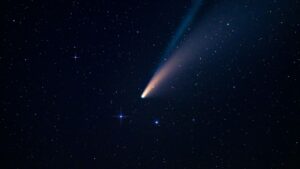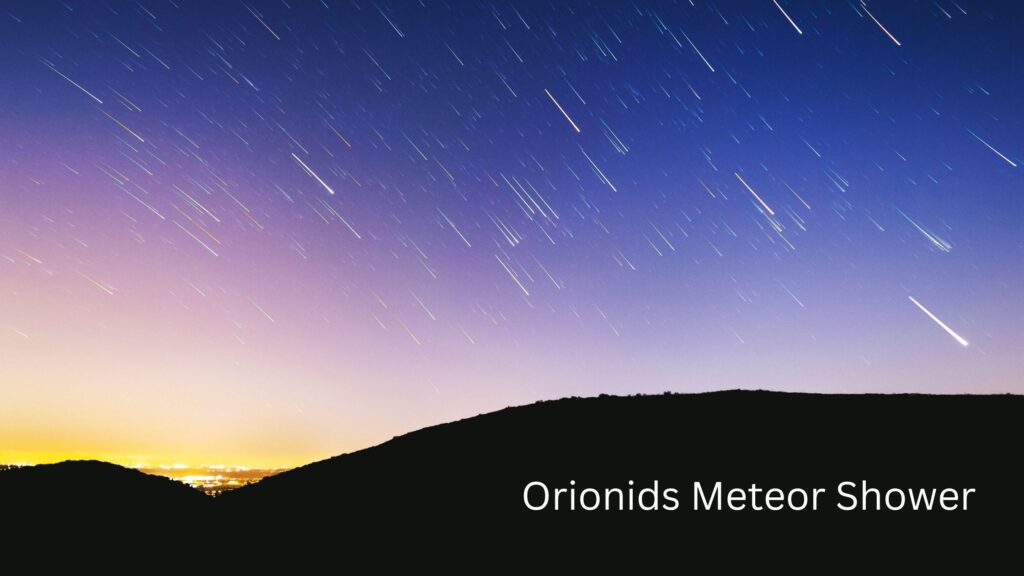Meteor showers are one of the most speculating phenomena ever in astronomy. They are beautiful to watch and give a sense of refreshment and happiness to the stargazers. Every year, millions of people worldwide wait for the moment for hours to get a glimpse of the tiny trails in the night sky.
The Orionidss Meteor Shower are no different; you can see them in October. Visible across the Orion constellation of the sky, these tiny tails of light will peak from midnight to dawn on the 21st and 22nd of October. So, it is an excellent opportunity for anyone who has a keen interest in viewing a rare event at night.
Key Highlights
- The Orionidss Meteor Shower are no different; you can see them in October.
- Visible across the Orion constellation of the sky, these tiny tails of light will peak from midnight to dawn on the 21st and 22nd of October.
- If you’re lucky and the sky is clear, you might watch over a hundred meteor showers in six hours.
- The ideal time to see a meteor shower is between midnight and early dawn.
- However, based on your location, the time can differ for different meteor types—seasons also affect the meteors.
About Orionid Meteor Shower
Orionids are beautiful debris originating from Halley’s Comet. So whenever the earth passes from the area of this dust during a revolution, we get the meteor shower. The volume and radiance of the meteors in Orionids showers are adequate for an individual and thus enhance the overall experience. However, one needs to find a great place away from the light pollution to capture the beauty of this event.

Point Of Origin And The Radiant
You can watch Orionids coming from the direction of the constellation Orion—more specifically, the Betelgeuse star, which is part of the same star formation.
The tenth brightest star in the night is expected to undergo supernova, and it’s rare to miss its presence in the night sky. On top of that, the Orion nebula is also present in the constellation, which can also help track the direction of meteors.
Volume, Timings And More
The meteors are expected to be between 10-30 per hour. However, it is a random event, and the number can fluctuate to a far greater extent. It is only there to provide the probability and data of the stargazers.
The best time to capture the event is between midnight and early morning of the 21st and the 22nd of October, 2023. If you’re lucky and the sky is clear, you might watch over a hundred meteor showers in six hours.
How To Watch The Orionids Meteor Shower
Just like the Perseid Meteor Shower, the Orionids require a clear sky without light pollution. An elevated area might enhance your gazing experience, but the most important thing is to focus on the radiant part of the sky. Secondly, patience is necessary because one might only see a meteor briefly. Other than that, there is no other obstruction between you and a spectacle show of the night sky.
Final Thoughts
So, if you’re a stargazer, don’t miss the opportunity to witness an extraordinary universe phenomenon. And if you’re new to the field and wondering what all this fuss is about? Then try to seek the meteor showers, and the blessings may fall on you.
Frequently Ask Questions (FAQs)
How can I see Orionid meteor shower from India?
If you’re from India, you need a remote place, away from light pollution and track the Orionids constellation, and then you can see the meteor showers.
What is the time to see a meteor shower?
The ideal time to see a meteor shower is between midnight and early dawn. However, based on your location, the time can differ for different meteor types—seasons also affect the meteors.
What is the meaning of Orionid?
Orionids is a term for meteors coming from the radiant of Betelgeuse of the Orion constellation.
Which meteor shower occurs between April 21 and May 12?
The Lyrids meteor shower peaks during April and May—the radiant of these meteors is the Lyra and Hercules constellations.


Pingback: Five Amazing Objects You See In Night Sky Of Northern Hemisphere